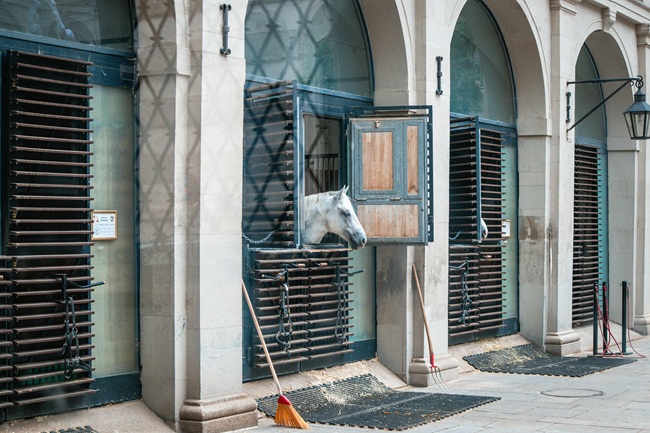
A change in your approach to horse stall cleaning might result in improved air quality in the stable, report researchers from Georg August University of Göttingen, in Germany. Researchers measured the air quality in the stable with different bedding types (wheat straw, wood shavings, and straw pellets) and mucking out regimens. The experiments were carried out in an enclosed, roofed stable with five box stalls housing two warmblood mares with foals and two warmblood riding mares. They found the use of wheat straw reduced the amount of ammonia in the air compared to wood shavings and straw pellets, but wood shavings and straw pellets kicked up fewer particles. In this study, waiting two weeks before mucking out did not increase ammonia concentrations in the stable. On the contrary, this mucking regiment offered some advantages by lowering particle and gas generation. But it is important to maintain stable hygiene by refilling with new straw every day.
Previous research has shown that even healthy horses housed in a conventional stable environment can show evidence of airway inflammation because of breathing in gases and particle matter. A constant exposure to excess dust is highly associated with chronic airway diseases like (recurrent airway obstruction). In addition, acute respiratory diseases caused by infectious agents may be exacerbated and prolonged by permanent dust inhalation. Stable air quality is influenced by other factors including air temperature, humidity, stable size, and height, as well as air movement, so they would also have to be considered in any cleaning regimen.
This report was originally published in the Journal of Animal Science.
Related Articles & Free Email Newsletter Sign Up
Biosecurity is a Key to Keeping Horses Healthy
The Cause of Cribbing Behavior in Horses
What a Horse Does With Its Tail Tells You a Lot


Comment here